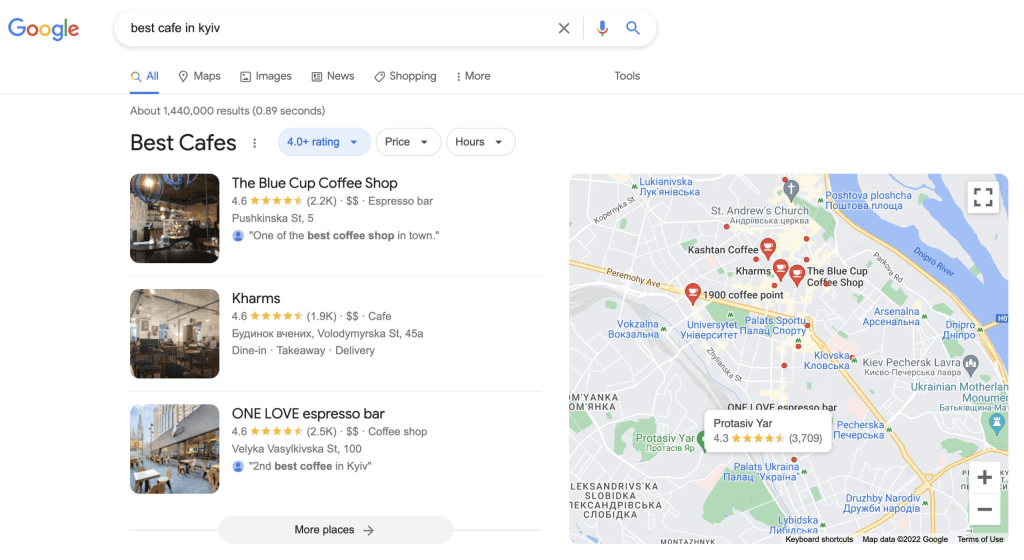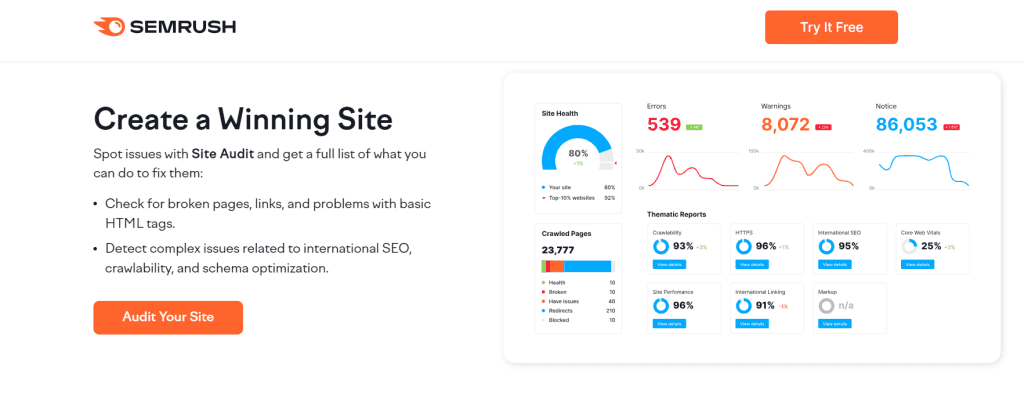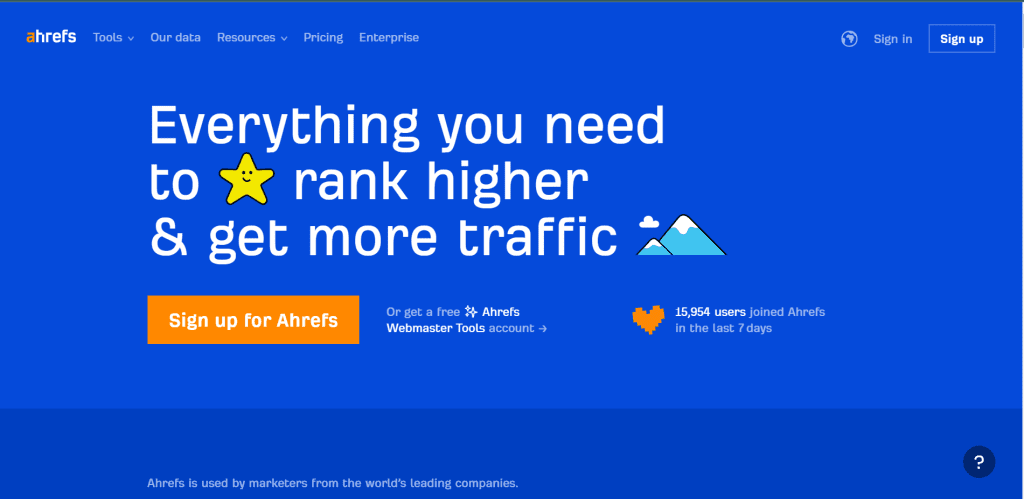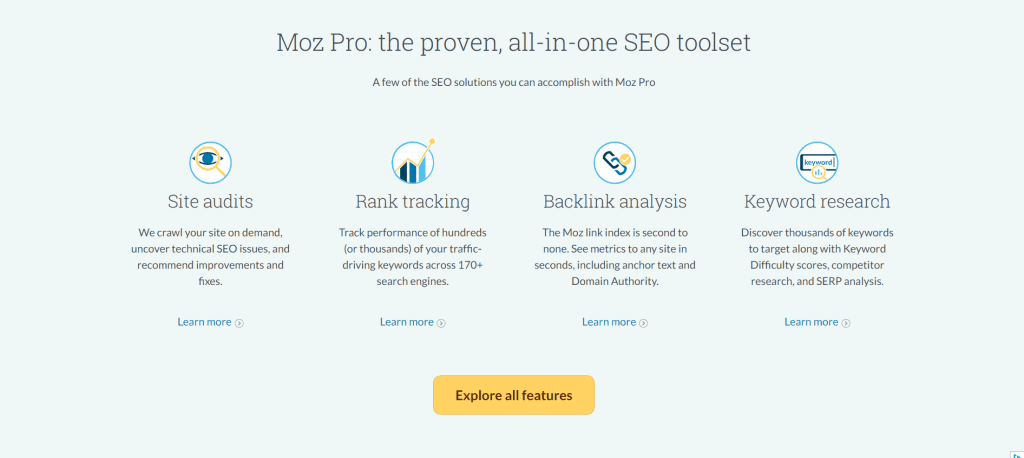Key takeaways
- SERP Analysis: Your SEO Compass: Harness SERP analysis to decipher user intent, outsmart competitors, and drive targeted organic traffic to your website.
- Adapt to Thrive: Stay Ahead with SERP Insights: Embrace evolving trends like voice search and structured data to ensure your SEO strategies remain effective and competitive.
- SERP Analysis: Your Path to SEO Excellence: Let data-driven SERP insights guide your content creation, helping you create user-centric, value-driven content that ranks and resonates.
In the vast and ever-evolving realm of digital marketing, staying ahead of the curve is not just a preference but a necessity.
Search Engine Optimization (SEO), the art and science of enhancing your website’s visibility on search engines, remains at the forefront of this digital revolution.
While many SEO techniques have come and gone, one aspect has continued to gain prominence and hold its ground as an indispensable tool for marketers and website owners: SERP Analysis.
If you’re relatively new to the world of SEO or have been navigating it for some time, you’ve likely encountered the term “SERP” or “Search Engine Results Page.”
These are the pages you see when you enter a query into a search engine like Google.
They contain a treasure trove of information about what users are looking for, how search engines interpret their intent, and what your competitors are doing to rank higher.
In this comprehensive guide, we will delve deep into the world of SERP Analysis and unveil its significance in the contemporary landscape of SEO.
We’ll traverse the intricate layers of search results to uncover invaluable insights that can transform your digital marketing strategy.
So, whether you’re a seasoned SEO expert or just dipping your toes into the SEO waters, this blog is your passport to understanding why SERP Analysis matters and how it can empower you to make informed decisions that will drive your website to the top of search engine rankings.
In this journey of discovery, we will unravel the mysteries of SERPs, and explore the tools and techniques that experts use to extract actionable data that demonstrate how SERP Analysis has led to remarkable SEO success stories.
We’ll discuss the common mistakes to avoid, reveal strategies for leveraging SERP features, and gaze into the crystal ball to anticipate future trends in SERP Analysis.
As we embark on this expedition, prepare to be enlightened, inspired, and equipped with the knowledge and skills needed to take your SEO efforts to the next level.
The digital landscape is ever-changing, but the insights gleaned from SERP Analysis are your compass, guiding you through the turbulent seas of online competition.
So, without further ado, let’s dive headfirst into the fascinating world of SERP Analysis and uncover the secrets that can elevate your SEO game and transform your online presence.
Welcome to the journey of discovering “Why SERP Analysis Matters: Leveraging Search Results for SEO Insights.”
Before we venture further, we want to share who we are and what we do.
About AppLabx
From developing a solid marketing plan on the web to creating compelling content on your website, optimizing for search engines, leveraging social media, and utilizing paid advertising on your website, AppLabx offers a comprehensive suite of digital marketing services on your website designed to drive growth and profitability for your business.
AppLabx is well known for helping companies and startups use website marketing to drive web traffic to their websites and web apps.
At AppLabx, we understand that no two businesses are alike. That’s why we take a personalized approach to every project, working closely with our clients to understand their unique needs and goals, and developing customized strategies to help them achieve success.
If you need a digital consultation, then send in an inquiry here.
Why SERP Analysis Matters: Leveraging Search Results for SEO Insights
- Understanding SERPs (Search Engine Results Pages)
- The Significance of SERP Analysis in SEO
- Tools for Effective SERP Analysis
- Understanding SERP Features
- Common Mistakes in SERP Analysis
- The Future of SERP Analysis
1. Understanding SERPs (Search Engine Results Pages)
What are SERPs (Search Engine Results Pages)?
Search Engine Results Pages, commonly known as SERPs, are the dynamic web pages displayed by search engines like Google, Bing, and Yahoo in response to a user’s search query.
These pages contain a curated list of search results ranked according to their perceived relevance to the user’s query.
The Anatomy of a SERP
To truly understand SERPs, it’s essential to dissect their components:
Organic Results: These are the core search results that search engines deem most relevant to the user’s query. They are not paid placements and are determined based on complex algorithms.
Paid Ads: Positioned typically at the top and sometimes on the right-hand side of a SERP, these are advertisements paid for by advertisers to appear when certain keywords are searched.

Featured Snippets: These are concise, information-packed excerpts that Google extracts from web pages and displays directly in the search results. They aim to provide quick answers to user queries.

Knowledge Graphs: Google often generates these information-rich panels on the right side of the SERP. They summarize essential information about a subject, such as people, places, or things, sourced from trusted websites and data.

Local Packs: When a user searches for local businesses or services, Google presents a local pack. It contains a map, a list of businesses, and basic details such as addresses, ratings, and contact information.

The Evolving Nature of SERPs
Understanding SERPs means keeping up with their continual evolution.
Over the years, SERPs have transformed significantly, with search engines constantly introducing new features and formats to enhance user experience and deliver more accurate results.
Mobile Responsiveness
The rise of mobile devices has forced search engines to prioritize mobile-responsive design.
In fact, Google officially switched to mobile-first indexing in 2019, meaning it primarily uses the mobile version of a site for ranking and indexing.
Rich Snippets
Rich snippets provide users with more context before they click on a result.
These can include star ratings, prices, product availability, and other structured data.
When searching for a recipe, Google might display star ratings, cooking time, and calories right in the search results.
Voice Search Integration
With the proliferation of voice-activated assistants like Siri and Alexa, SERPs now need to cater to voice search queries.
This often results in more conversational and long-tail keyword usage.
Video Integration
SERPs now include video carousels, indicating the growing importance of video content in SEO.
SERPs are dynamic and multifaceted, continually evolving to meet the demands of users and the advancements in technology. To succeed in SEO, it’s vital to comprehend the ever-changing landscape of SERPs and adapt your strategies accordingly.
2. The Significance of SERP Analysis in SEO
Identifying Competition and Assessing Market Landscape
Understanding your competitors and the broader market landscape is fundamental to any successful SEO strategy. SERP analysis is the gateway to gaining these insights.
Example:
Suppose you run an e-commerce website selling athletic shoes. By analyzing SERPs for relevant keywords, you can identify the top-ranking competitors, their strategies, and what type of content resonates with your target audience.
Data:
- 92.96% of all global web traffic comes from Google Search, Google Images, and Google Maps.
- 75% of users never scroll past the first page of search results.
Discovering User Intent and Behavior
SERP analysis provides a window into user intent, allowing you to tailor your content to what users are actually looking for.
Example:
Imagine you’re a travel blogger planning to write an article about “best budget travel destinations.”
By analyzing the SERPs, you notice that most top-ranking pages include budget breakdowns, itineraries, and tips. This insight informs your content strategy to align with user intent.
Uncovering Keyword Opportunities
SERP analysis helps you identify untapped keyword opportunities, both short-tail and long-tail, to broaden your SEO strategy.
Example:
If you’re in the health and fitness niche, SERP analysis might reveal that there’s growing interest in “home workouts for beginners.” This keyword opportunity allows you to create content that caters to this specific audience.
Tracking Changes and Staying Competitive
SERP analysis isn’t a one-time endeavour; it’s an ongoing process that helps you adapt to changes in the SEO landscape.
Example:
Let’s say you’ve been ranking well for “best smartphone reviews,” but suddenly, a new competitor emerges. By continuously analyzing SERPs, you can identify the shift and adjust your strategy to maintain your competitive edge.
Data:
- 53% of all website traffic comes from organic search.
- Google updates its search algorithm thousands of times per year.
Enhancing Content Strategies and User Experience
Quality content is the cornerstone of SEO success.
SERP analysis guides you in creating content that resonates with your target audience.
Example:
For a blog about “digital photography tips,” SERP analysis reveals that users appreciate articles with detailed camera settings and practical examples.
By incorporating this information into your content, you provide a richer user experience.
Data:
- Content marketing generates three times more leads than paid search advertising.
- Websites that publish new blog posts regularly receive 55% more visitors.
3. Tools for Effective SERP Analysis
When it comes to analyzing SERPs effectively, having the right tools at your disposal can make all the difference.
Here are some essential tools for the job:
Google Search Console
Example: Google Search Console provides valuable insights into how your site appears in search results, including click-through rates (CTR) and keyword performance.

SEMrush
Example: SEMrush allows you to track your rankings, analyze competitor data, and find new keyword opportunities.

Ahrefs
Example: Ahrefs offers in-depth backlink analysis and competitive research, helping you understand why certain pages rank higher.
Ahrefs’ index contains over 22.21 trillion backlinks.

Moz
Example: Moz‘s keyword research tool helps identify high-potential keywords, and its “Keyword Explorer” feature provides detailed SERP analysis.

Techniques for Effective SERP Analysis
Tools alone won’t suffice; you also need the right techniques to extract actionable insights from SERPs.
Keyword Analysis
Suppose you’re optimizing a blog post about “healthy breakfast recipes.”
SERP analysis reveals that the top results are listicles with step-by-step instructions and nutritional information, indicating user preference for comprehensive guides.

Competitor Analysis
Analyzing your competitor’s SERP presence helps identify gaps in your strategy. If a competitor consistently ranks above you, investigate their content and backlink profile to discern their strategy.
User Intent Assessment
If a SERP for “best smartphones” predominantly displays review articles, it suggests that users intend to research before buying. Adjust your content strategy accordingly to match user intent.

Featured Snippet Analysis
If a SERP includes featured snippets (position zero), study them carefully. Identify what type of content is being featured and aim to create content that can potentially occupy this prime spot.
Mobile SERP Analysis
Mobile SERPs may differ significantly from desktop results. Analyze both to ensure your content caters to users on all devices.
Local SEO Analysis
For local businesses, understanding local packs in SERPs is crucial. Analyze what factors influence local rankings, such as reviews and location relevance.
Tracking SERP Changes
Use tools like Moz or SEMrush to set up alerts for keyword ranking changes.
This allows you to react quickly to shifts in the SERPs.
4. Understanding SERP Features
Before diving into how to leverage SERP features, it’s essential to understand what they are and how they impact search results.
What Are SERP Features?
SERP features are specialized elements that appear within search engine results pages (SERPs) alongside traditional organic search results.
These features aim to enhance the user experience by providing immediate answers to specific queries.
Common SERP Features
- Featured Snippets: These provide concise answers to user queries and often appear at the top of the SERP.
- Knowledge Graphs: These display summarized information about a topic or entity on the right side of the SERP.
- Local Packs: These show local businesses related to a user’s search query, complete with maps and contact information.
- Video Carousels: A carousel of video results from platforms like YouTube, making video content more accessible.
- Image Packs: Collections of images related to a search query, often used for visual searches.
- People Also Ask (PAA): Expanding question boxes that provide additional information related to the user’s query.
Leveraging SERP Features for SEO Insights
Now that we understand what SERP features are, let’s explore how to leverage them for SEO insights.
Featured Snippets
If your website ranks in a featured snippet for “how to tie a tie,” you know users are seeking quick, step-by-step instructions. Tailor your content to provide clear and concise guides.
Knowledge Graphs
If a knowledge graph appears for your brand name, ensure that the information displayed is accurate and up-to-date. This enhances your brand’s credibility.
Local Packs
If you operate a local business, focus on optimizing for local SEO signals, such as Google My Business listings, customer reviews, and NAP consistency (Name, Address, Phone).
50% of consumers who conducted a local search on their smartphone visited a store within a day.
Video Carousels
If video content is essential to your brand, strive to appear in video carousels by optimizing video titles, descriptions, and thumbnails.
Image Packs
E-commerce websites can benefit from optimizing images for search.
Ensure the image alt text is descriptive and relevant to your products.
Visual content is 40 times more likely to be shared on social media than other types of content.
People Also Ask (PAA)
PAA boxes can be a goldmine for content ideas.
If you’re a health and fitness blogger, the questions in PAA can inspire informative articles.
5. Common Mistakes in SERP Analysis
Effective SERP analysis is crucial for informed SEO decisions, but it’s equally essential to avoid common pitfalls that can hinder your progress.
Overlooking Mobile SERPs
Focusing solely on desktop SERPs can be detrimental, as mobile search traffic continues to grow.
If you optimize for desktop but ignore mobile, you may miss out on a substantial portion of your target audience.
Ignoring User Intent
Assuming user intent without analyzing SERPs can lead to misguided content strategies.
If your target keyword is “apple,” understanding the intent behind it (e.g., whether users seek information about the fruit or the tech company) is vital.
Neglecting Long-Tail Keywords
Focusing solely on high-competition short-tail keywords can limit your SEO success.
If you’re a small business, targeting “best smartphones” might be too competitive. Long-tail variations like “best budget smartphones under $300” may offer better opportunities.
Not Monitoring SERP Changes
As stated, Google updates its search algorithm thousands of times per year.
Failing to regularly track SERP changes can lead to missed opportunities or unnoticed declines in rankings.
Your page ranking #1 for a high-traffic keyword may slip to the second page without you noticing, resulting in a significant drop in organic traffic.
Ignoring Local SEO Signals
If your business has a physical location, ignoring local SEO signals can be detrimental. 50% of consumers who conducted a local search on their smartphone visited a store within a day.
If your Google My Business listing is inaccurate or incomplete, it can affect your local pack rankings and online reputation.
Keyword Stuffing
Stuffing content with keywords without providing value to users can lead to poor user experience and penalties from search engines. Repeating the same keyword unnaturally in a blog post can deter readers and hurt your SEO efforts.
Ignoring User Experience (UX)
Neglecting the user experience on your website can result in high bounce rates, even if you rank well in SERPs. 53% of mobile site visitors leave a page that takes longer than three seconds to load.
If your site is slow to load or difficult to navigate, users are more likely to leave, reducing your search engine visibility.
6. The Future of SERP Analysis
As technology and user behaviour continue to evolve, so too does the field of SERP analysis. Staying ahead of the curve is essential for SEO success. Here are some emerging trends to watch out for:
Voice Search Optimization
With the growing popularity of voice-activated assistants like Siri and Alexa, voice search is becoming more prevalent.
Optimizing for natural language queries and long-tail keywords is crucial for voice search. For instance, “What’s the weather like today?” versus “Weather forecast.”
Structured Data and Schema Markup
Search engines are increasingly relying on structured data to understand and rank content.
By implementing schema markup, a recipe website can have its recipes displayed with rich snippets in SERPs, increasing visibility and click-through rates.
Featured Snippet Optimization
Featured snippets continue to be a prominent SERP feature, attracting user attention and clicks.
Crafting content that answers common questions concisely can increase your chances of being featured in snippets.
Mobile-First Indexing
Google’s mobile-first indexing means it predominantly uses the mobile version of a site for ranking and indexing.
Ensuring your website is mobile-responsive and loads quickly on mobile devices is vital.
AI and Machine Learning Integration
Search engines are increasingly using AI and machine learning to understand user intent and deliver more personalized results.
Google’s BERT algorithm is designed to better understand the context of words in a search query, leading to more accurate results.
Video SEO and Visual Search
Video content and visual search are gaining importance in SERPs.
Optimizing video titles, descriptions, and thumbnails can improve video SEO. Visual search optimization involves using descriptive image alt text.
- Data: Visual content is 40 times more likely to be shared on social media than other types of content.
Conclusion
In the ever-evolving landscape of digital marketing and search engine optimization (SEO), the significance of SERP analysis cannot be overstated.
As we’ve journeyed through the intricate facets of this topic, we’ve unveiled the wealth of insights, strategies, and tools that SERP analysis brings to the table.
From understanding the dynamic components of Search Engine Results Pages (SERPs) to leveraging the power of SERP features and anticipating future trends, we’ve embarked on a voyage that equips you with the knowledge and tools needed to thrive in the competitive world of SEO.
1. Unveiling User Intent: SERP analysis is your crystal ball for deciphering what users are looking for. By closely examining SERPs, you can uncover their intent, answer questions, solve problems, and provide the content they seek. In doing so, you not only improve your rankings but also enhance user satisfaction.
2. Outsmarting Competitors: In the digital arena, knowing your competitors is half the battle. SERP analysis is your secret weapon for understanding what your competitors are doing right, where they’re falling short, and how you can outperform them. It’s your gateway to the competitive intelligence needed to dominate your niche.
3. Adapting to Evolving Trends: The world of SEO is in a constant state of flux. As we’ve seen, SERPs evolve as technology advances and user behaviours change. By staying ahead of these changes through regular SERP analysis, you can adapt your strategies, capitalize on emerging opportunities, and protect your hard-earned rankings.
4. Data-Driven Decision-Making: SEO is no longer a guessing game. With SERP analysis, you have data at your fingertips, allowing you to make informed decisions. You can track the performance of your keywords, assess the effectiveness of your content, and identify areas for improvement.
5. Crafting User-Centric Content: The heart of SEO is content, and SERP analysis is the compass guiding your content creation efforts. By understanding what content formats and information users value most, you can create content that not only ranks well but resonates with your target audience.
As we peer into the future of SERP analysis, we see exciting opportunities and challenges.
Voice search is on the rise, structured data is becoming even more critical, and AI-driven algorithms are redefining how search engines understand user intent. Keeping abreast of these trends will be paramount for SEO success.
In conclusion, SERP analysis isn’t just a valuable tool; it’s the cornerstone of effective SEO. By investing time and effort into dissecting SERPs, you’re not just optimizing for search engines; you’re optimizing for users.
You’re ensuring that your website delivers value, answers questions, and fulfils needs.
So, whether you’re a seasoned SEO expert or just embarking on your SEO journey, remember this: SERP analysis is your compass, your crystal ball, and your competitive edge.
It’s the key to unlocking the potential of your online presence, driving organic traffic, and ultimately achieving your digital marketing goals.
As you navigate the ever-changing waters of SEO, let SERP analysis be your guiding star. It’s not just a strategy; it’s a commitment to excellence in the digital realm.
Embrace it, refine it, and let it illuminate the path to SEO success. Your journey has just begun.
Thank you for joining us on this voyage of discovery, and may your SERP analysis efforts lead you to new horizons of online achievement.
If you are looking for a top-class digital marketer, then book a free consultation slot here.
If you find this article useful, why not share it with your friends and business partners, and also leave a nice comment below?
We, at the AppLabx Research Team, strive to bring the latest and most meaningful data, guides, and statistics to your doorstep.
To get access to top-quality guides, click over to the AppLabx Blog.
Looking to boost your website’s traffic in 2023? Explore our latest blog post on the top WordPress SEO plugins to supercharge your website’s performance and visibility.
People also ask
What is the primary purpose of SERP analysis in SEO?
SERP analysis in SEO serves multiple critical purposes. Firstly, it helps you understand user intent and what your target audience is searching for. By dissecting SERPs, you can tailor your content to meet these specific needs, improving user engagement and click-through rates.
How can SERP analysis benefit local businesses?
SERP analysis can be a game-changer for local businesses. It allows them to identify local search trends, analyze competitors in the area, and optimize their Google My Business profiles. By understanding what’s working in local SERPs, businesses can enhance their visibility, attract more foot traffic, and ultimately boost sales.
Why is it crucial to adapt to emerging SERP trends?
Search engines are continually evolving, and so are user behaviours. Adapting to emerging SERP trends is crucial because it ensures your website remains visible and competitive. Whether it’s optimizing for voice search, implementing structured data, or leveraging AI-driven algorithms, staying up-to-date with SERP trends is essential for long-term SEO success.
































